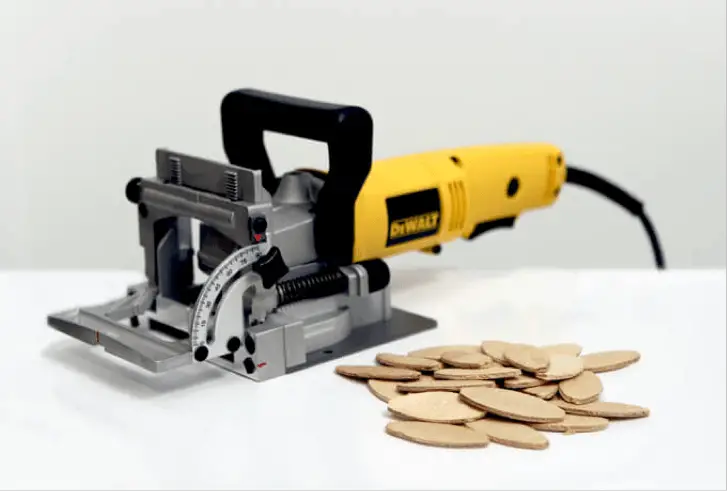Power Tools
Best Honing Guide for Woodworking
Using a honing guide makes sharpening tools easy and accurate. The alternative is to hone freehand. While there’s nothing wrong with the old-fashioned method, using a honing guide ensures a smoother, flatter slope, whereas honing by hand often results in a rounded bezel.
Honing guides can be really useful, especially because sharpening by hand can make blades incapable of clean cuts. We’ll compare eight of the most popular honing guides—ranging in price from $20 to over $100—to see which features are useful, which ones are essential, and whether you
need to spend a lot to get a good honing guide.
Why do you need a honing guide in the first place?
A honing guide is one of those tools you don’t realize you need until you buy one. Then, it quickly becomes the most important tool because it really makes a difference to your blades.
Picking up any honing guide guarantees you that:
Sharpening tools will be easier and faster
You will achieve consistent results with minimum hassle
Your blades will cut more cleanly thanks to flat, smooth bevels
You will be able to select specific bevel angles
Stanley
If this name sounds familiar, it’s because this is the same company that builds chisels and hand planes. This company’s honing guide has stayed the same ever since they introduced it a while back. It arrives with a kit consisting of an 8-inch oilstone and some lubricating oil.
It’s a basic honing guide, but it gets the job done. Over the years, the company has made various improvements, including a flip-down gauge that facilitates quick bevel changes. It has three commonly used bevel angles marked on it for reference.
Clamping your tool is troublesome since you have to hold it in place while tightening down two thumbscrews. Other than this little issue, it’s a perfectly adequate jig.
General
The General is made up of two hinged halves that move around to allow you to set the perfect bevel angle. On one end, there is a clamp that holds the tools, and on the other lies the guide that helps the tool travel back and forth.
The roller of this guide rides on the workbench's surface, not the sharpening stone. It doesn’t feel problematic if your stone is parallel to the workbench, but it’s damn near impossible to use if your sharpening stones aren’t parallel.
What’s more, you need to completely re-adjust the guide when you switch to a different sharpening stone. That’s a lot of work for the average woodworker, which is a huge drawback.
On the plus side, you won’t find many honing guides worth $20, especially when they are this well-made.
Richard Kell
Simple, decent, and elegant are the best words to use when describing the Richard Kell honing guide. This English honing guide has a reputation for being silky smooth in operation and crafted very well.
Many woodworkers choose it for its roller configuration. Unlike most available options, the Richard Kell has its rollers on the sides—the jig straddles the sharpening stone!
Unfortunately, you can only use this with chisels because it only supports blades up to 11/4 inches in width. That means that you can only sharpen chisels with it and nothing more. Kell addressed this with a bigger model that accepts blades of up to 25/8 inches. But, it’s really hard to use with smaller blades, so if you choose this brand, be prepared to own at least two models.
Eclipse-Based
Eclipse was an England-based manufacturer of honing guides. Although they stopped making them, their models have earned such a reputation for accuracy that several copycats are in the market.
An eclipse-style honing guide has a pair of jaws that hold the tool. Since it is divided into two, the jaws can fit both plane irons (upper jaw) and chisels (lower jaw), and the design allows for quick, easy, and centered placements of the tool in the guide.
Few honing guides are as no-nonsense as Eclipse honing guides, but the only drawback has to be the narrow roller. It is precariously balanced, so you must be careful not to tip it when using narrow blades.
Veritas Mk. II
There is a lot to love about the Veritas Mk. II. It has a comfortable, contoured body that’s easy to use, a very secure clamping bar, and a smooth, wide roller with an interesting integrated feature: you can add a micro-bevel to the tool you’re sharpening.
The Veritas Mk. II is a highly accurate tool, partially because it comes with a set-up gauge. The set-up gauge allows you to position tools squarely for any bevel angle you need. It is so precise that you can use it to hone back bevels on plane irons.
The solid build is hard to fault, but if you must point out a downside to the Veritas Mk. II, it would be its weight. It’s trivial to think about, but if you routinely use it to sharpen narrow chisel blades, you’ll soon go looking for a lighter model.
Alisam Sharpening Sled
If Richard Kell’s side-mounted wheels appeal to you, then the Alisam Sharpening Sled is worth consideration. It has a similar wide stance built to perfection, so it’s easy to control.
In addition to that, you can adjust it to three heights to accommodate different sharpening stones. This qualifies it for use with a wide range of sharpening stones, including surface stones and Waterstones as thick as two inches.
It is a very comfortable honing guide, and if you wish to, you can buy different sides for quick height changes.
Pinnacle
This award-winning honing guide might be considered the best complex design, but it’s not that hard to use. It doesn’t have rollers, but instead, it moves courtesy of a sled nestled between two rails.
It is highly adjustable too. It’s one of the few options that allow you to adjust the primary bevel in 5-degree increments and a secondary micro-bevel of two degrees.
Equipped with slick, plastic wear strips, it slides over stone and metal honing plates and can also work with abrasive honing film and sandpaper. As such, it earns full marks for versatility and improvisation.
Why You Should Trust Us
At Woodworking Tool Guide, we know one size doesn't fit all! We cater to every woodworker, from beginner to pro, with insights and recommendations tailored to your skill level, project needs, and budget. We take the guesswork out of choosing the right tools, whether you're tackling your first crafting a masterpiece for the ages. So grab your chisel, join our community, and let's build something amazing together!
Woodworking Tool Guide wasn't just born, it sprouted from a seed of passion for the craft. What started as a joyful exploration blossomed into a trusted online haven for fellow enthusiasts like you. We pour our love into meticulously chosen review selections, meticulous hands-on testing, and lab-backed insights, all to empower you with reliable, comprehensive information you can build on. So, grab your tools, trust our guidance, and let's build something beautiful together!
Passion-Driven Expertise
Our journey started with a shared love for woodworking. The team behind the Woodworking Tool Guide is comprised of individuals who are not just writers but passionate woodworkers themselves. This shared enthusiasm ensures that our content is crafted with a deep understanding of the craft and an authentic appreciation for quality tools.
Top Tool Guides Online
Woodworking Tool Guide has rapidly ascended to become one of the premier online destinations for tool guidance. Our commitment to excellence and the accuracy of our information has positioned us as a reliable source for both beginners and seasoned woodworkers seeking trustworthy advice on the best tools for their projects.
User-Centric Approach
Our content caters to every woodworker, from rookies just starting out to seasoned pros tackling intricate projects. We tailor our insights and recommendations to your skill level, project needs, and budget, ensuring you find the perfect tools to match your unique woodworking journey. So step into your workshop, grab your tool belt, and let Woodworking Tool Guide be your trusted companion as you craft your masterpieces.
Continuous Support and Innovation
Woodworking is an ever-evolving craft, and so is our commitment to supporting you. We are dedicated to bringing you the latest information on woodworking tools, techniques, and trends. Our team is actively working to expand our content and bring you more valuable insights, ensuring that you stay well-informed in your woodworking adventure.
Hands-On Experience
Ditch the endless research rabbit hole! At Woodworking Tool Guide, we believe in actionable advice, not armchair analysis. We get our hands dirty, putting every tool through its paces in real-world woodworking scenarios. Whether it's the precision of a table saw, the versatility of a router, or the tactile satisfaction of a handplane, we test for performance, durability, and user-friendliness. No more sifting through dry specs – we deliver practical insights you can trust to transform your woodworking dreams into reality.
Woodworking Tool Guide isn't just a review site, it's your trusted companion on the sawdust-filled path to woodworking mastery. Our expert team, led by veteran David Jones, meticulously tests and explains tools in terms you understand. We cut through the jargon, bias, and confusion with real-world insights and honest evaluations. Join our passionate community, where decades of experience, cutting-edge knowledge, and shared love for the craft come together to guide you every step of the way. So grab your chisel, buckle up, and let's embark on this exciting woodworking adventure, together!







